Religion: Bible

Esther: Bible
Esther, the main character in the book named after her, is a young Jewish woman who becomes queen of the Persian empire and risks her life by interceding for the Jewish people to save them from a pogrom. Set in the Persian diaspora, the Book of Esther depicts the struggle for Jews to survive in the face of hostility in a foreign land.

Esther: Midrash and Aggadah
Queen Esther, the central character in the Biblical book named after her, is extensively and sympathetically portrayed in the Rabbinic sources. In their commentary on the Book of Esther, the Rabbis expand upon and add details to the Biblical narrative, relating to her lineage and history and to her relations with the other characters: Ahasuerus, Mordecai, and Haman.

Eve: Apocrypha
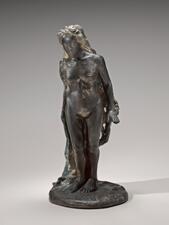
Eve: Bible
The first woman, according to the biblical creation story in Genesis 2–3, Eve is perhaps the best-known female figure in the Hebrew Bible, although she never appears after the opening chapters of Genesis. Most of the negative traits associated with her, including sin, seduction, and subservience, are part of Jewish and Christian post-biblical interpretations and are not present in the Bible itself. A close look at the Eve narrative in its ancient Israelite context shows Eve to be a partner with Adam as they begin their agrarian life outside of Eden.

Eve: Midrash and Aggadah
Eve’s character is posited to be that of the original and quintessential woman. The Midrash interprets her traits as representative of the negative aspects of femininity. Eve’s punishment for her sin is also tied to the traditional ideas of the fundamentals of womanhood – childbirth, pregnancy, and male spousal domination.
Ruth Fainlight
Female Purity (Niddah)
Halakhic practice for Niddah, or female purity, is based on a harmonistic reading of Leviticus 12,15, 18, and 20. The laws of female purity have been historically used to determine the status of women in a patriarchal society.
Feminine Images of God
Jewish scripture includes few examples of a feminine or woman-personified God. The Hebrew Bible contains limited references to a female personification of God; God is usually explicitly described as a man. Medieval and contemporary theology have largely rejected the idea of divine gender, but some modern feminist theologians have interpreted texts to draw comparisons to the feminine experience.
Feminist Theology
Gender Identity In Halakhic Discourse

Louise Glück
Louise Glück, American poet, essayist, and educator, was the recipient of the 2020 Nobel Prize in Literature, as well as numerous other awards for her writing; she also served as poet laureate of the United States from 2003 to 2004. One finds the personal, the mythological, and the Biblical woven intricately throughout Glück’s oeuvre.
Gomer: Bible
The prophet Hosea uses his adulterous wife Gomer as a metaphor for God as the faithful husband to Israel. Gomer and Hosea’s relationship shows how women were ostracized for extramarital sex while such behavior was tolerated if not encouraged in men, paralleling the relationship between Israel and God. It is difficult, however, to separate historical facts about the couple’s domestic problems from the theological message expressed through them.
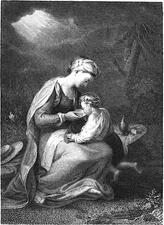
Hagar: Bible
Hagar is Sarah’s Egyptian slave woman, whom Sarah gives to Abraham as secondary wife and who would bear a child for him. After Hagar becomes pregnant, Sarah treats her harshly. Eventually Hagar flees from her mistress into the wilderness, where God’s messenger speaks to her. Hagar has long represented the plight of the foreigner, the slave, and the sexually abused woman.
Hamutal: Bible
Hamutal was one of the queens of the Kingdom of Judah and had a great deal of influence over her sons’ reigns.

Hannah Mother of Seven
The mother of seven is a nameless figure from II Maccabees who was arrested and died along with her seven sons for defying the decree of the Seleucid monarch to transgress the commandments of the Torah. Her death is retold in rabbinic and medieval literature, where she is named both Miriam and Hannah.
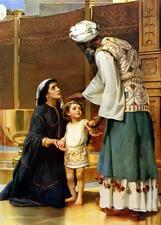
Hannah: Bible
Hannah, the second and barren yet preferred wife of Elkanah, promises to return her child to YHWH if he grants her a son. Her prayers are answered, and she follows through on her pledge to YHWH. Hannah’s narrative emphasizes the importance of fertility and childbirth in Israeli artistic narratives and presents a portrayal of an independent and resourceful woman.

Hannah: Midrash and Aggadah
Hannah is depicted by the Rabbis as a righteous woman who was devout in her observance of the commandments and tested by God through her infertility. Her story is the basis for much of the rabbinic conception and rules of prayer.
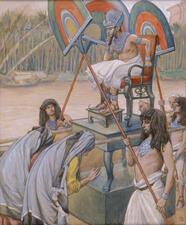
Hebrew Women in Egypt: Bible
Hebrew women in Egypt are critical figures in the Bible, especially concerning their maternal and physically nurturing roles. Hebrew midwives help male babies escape the infanticide commanded by the Pharaoh, and another woman helps save baby Moses’ life. These stories show how women were able to undermine the Pharaonic authority and ensure the survival of the Hebrew people in general.
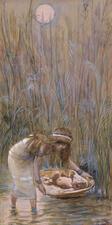
Hebrew Women in Egypt: Midrash and Aggadah
The Rabbis famously maintain that the Israelites were redeemed from Egypt by merit of the righteous women of that generation, who strove mightily to continue to bring forth children, regardless of the grueling servitude and despite Pharaoh’s decree that the male children be killed.
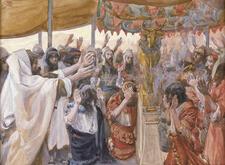
Hebrew Women in the Wilderness: Midrash and Aggadah
The Rabbis portray the women of the generation that wandered in the wilderness as righteous, not caught up in the sins that swept the men of Israel.
Huldah: Bible
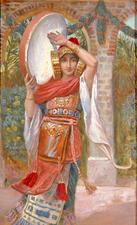
Jephthah's Daughter: Midrash and Aggadah
Jephthah’s daughter is portrayed in midrash as a wise and practical woman, well-versed in halakhah and the Torah. The rabbis place the blame for her murder on her father and the High Priest Phinehas.
Jewish Women in the New Testament
The New Testament describes Jewish women’s social roles in the late Second Temple period: in the home, in business ventures (especially textiles), in synagogues and the Temple, serving as patrons of the early Jesus movement, and as suffering from and being healed of various ailments. Despite the variety of examples of women’s agency, many Christian interpreters paint an historically inaccurate picture of a misogynistic culture in order to show Jesus, Paul, and their early movement as progressive on women’s issues.
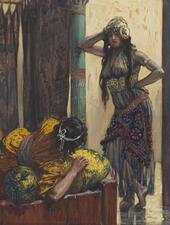
Jezebel: Bible
Jezebel was a Phoenician royal whose identity and name have come to signify a power-hungry, violent, and whorish woman. However, her narrative shows that she wielded significant power and was one of few women to do so in the Bible, and resentment of her can be at least partially attributed to the general scriptural dislike of powerful women.

Jochebed: Bible
Jochebed, wife of Amram and mother of Moses, Aaron, and Miriam, is mentioned by name only in Exod 6:20 and Num 26:59, both genealogical listings. Jochebed, whose name (Hebrew yokheved) apparently means “YHWH is glory,” is notable as the first person in the Bible to have a name with the divine element yah, a shortened form of YHWH.


